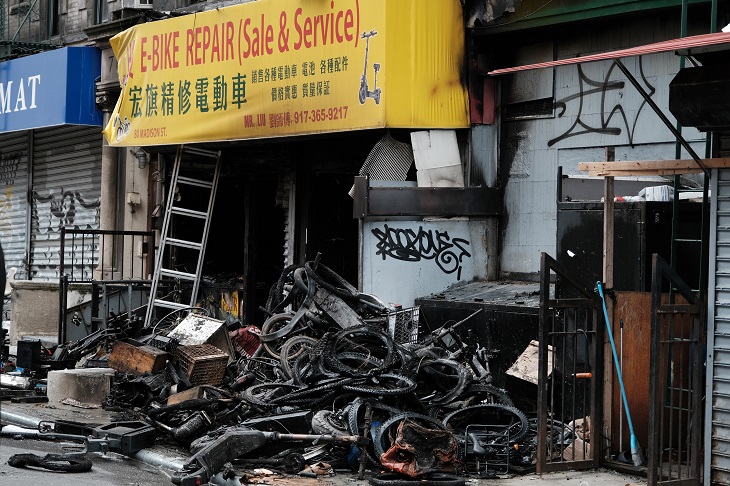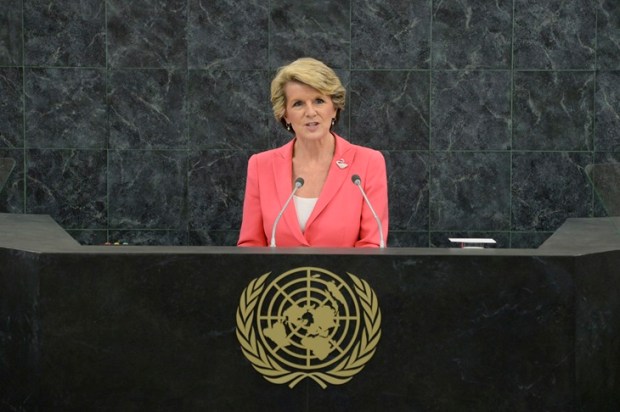Lithium batteries in electric vehicles are going to cause a major disaster – it’s only a matter of time.
I say this as my fingertips hover a quarter-inch from the Lithium battery in this laptop. The risk from phones, vape pens, and laptops is reasonably well-known and manageable, given their small size. However, we should mention that cheap mass production in China has seen a lowering of standards and a sharp rise in accidents…
Gaps in quality control have not gone unnoticed by airlines, who carry the greatest risk in the transport of these items on passenger flights and airfreight. Aviation Attorney Joseph LoRusso said recently, ‘We’re defying physics. We’re taking a big tube at 600 miles an hour from point A to point B … what’s impressive is the environmental factors that we deal with: extreme cold temperatures, pressure changes, barometric changes, sudden changes, rapid changes … it really challenges and stresses those batteries.’
Small devices catching fire is one thing, but E-scooters and electric vehicles have significantly larger batteries operating in tougher conditions that ‘literally explode’ (according to the Commissioner of the New York Fire Department).
Accidents where batteries have randomly caught fire – either in transport, during crashes, or while parked – continue to happen, including several instances where they have destroyed shipping vessels with runaway fires.
The major concern voiced by authorities is that one of these Lithium battery fires is going to happen in the underground carpark of a residential high-rise. An out-of-control Lithium battery fire, spreading from car-to-car, in a confined space impervious to conventional sprinkler systems, could kill thousands.
There is no provision for this situation. Lithium battery fires are notoriously difficult to extinguish, infinitely more toxic when alight, and the cost required to upgrade buildings to handle them – even if it were possible – is not likely for 50 years.
Remember those ‘warning’ messages on the packaging of your laptop? We are going to need those printed on the cement beneath electric vehicles in carparks…
Electric vehicles claim to be good for the environment – possibly a marketing initiative rather than a factual description of the product – and that means virtuous green-tinged leaders are manipulating the car market to rush their uptake. Despite increased production, the stability problems within Lithium batteries have not yet been solved.
We were reminded of these safety concerns yesterday when an electric car parked at Sydney airport went up in flames, taking 4 cars with it on, of all days, September 11.
It appears that the 2023 MG ZS EV, a mid-range EV with a 5-star ANCAP rating, had its battery pack detached from the main vehicle while being stored at the airport.
The manufacturers put out a statement this morning:
‘We have become aware of an incident that took place with a damaged EV battery pack at a Sydney holding yard on Tuesday August 12, 2023. This is unfortunate and as far as we’re aware, is an isolated incident. We are working closely with the Fire and Rescue NSW investigators to piece together the circumstances surrounding the incident.’
They added:
‘MG Motor Australia takes all safety concerns very seriously. Our customer’s safety in our vehicles continues to be of paramount importance and it remains our objective to have all vehicles subject to any damage or issues rectified as soon as possible.’
The manufacturer is doing the right thing by conducting full safety checks and investigations into the cause of the fire. It is only through this kind of calm diligence that the safety issues surrounding Lithium batteries may be solved. Regardless of whether Australia’s future involves mass-produced electric vehicles, it will certainly involve Lithium batteries.
Who knows. The lessons learned from electric vehicle fires may one day save us from a fire in a giant battery farm.
Drive reported on the incident, saying that special research officers from the NSW Fire Rescue’s ‘Safety of Alternative and Renewable Energy Technologies’ (SARET) were in attendance today. One of their major priorities is to gain an understanding of Lithium battery fires which are occurring in higher numbers around the world. With government policy forcing the market to adopt EVs, this has become a significant issue.
According to the Daily Mail, there were 180 Lithium battery fires in NSW in 2022. While people are quick to point out that there are vastly more car fires in traditional vehicles, those fires do not typically occur when the car is parked and minding its own business. The habit of Lithium batteries catching fire when parked or in transport is the biggest concern for the industry because it makes their risk difficult to manage.
The SARET research team say on their website:
‘With higher usage comes greater risk, and there has been a noticeable increase in reported Lithium battery-related fires and casualties worldwide.
‘Recent incident data from the first quarter of 2022 indicated that 100 fire calls to Fire and Rescue NSW involved a battery in thermal runaway, which is an uncontrolled and excessive rise in heat within a battery cell or several battery cells often leading to a cell venting and fire.’
They also point out that there is a ‘general lack of guidance and provisions in building codes’ to address the safety of these emerging renewable technologies. What can be done to mitigate a risk like this? Aside from not owning the product…?
Electric vehicles use the world’s shipping industry for delivery. A 2023 Shipping and Safety Review reported that the second most common cause of ‘loss of vessels in 2022 was fire or explosion’.
‘According to the Allianz report, a combination of causes is increasing the risk of fires at sea. Decarbonization, while a positive global development, has led to new types of cargo such as electric vehicles (EVs) and the prevalence of lithium-ion (Li-ion) batteries which pose a growing risk for container shipping and car carriers. The Li-ion market is expected to grow by over 30 per cent annually over the next decade. Nearly 10 per cent of global car sales were electric in 2021, four times the market share in 2019.’
It goes on to add:
‘In March 2023, the European Maritime Safety Agency (EMSA) published its CARGOSAFE study, which assesses the risks associated with fires on container ships and evaluates prevention, detection, firefighting, and containment measures. The study indicated that the main cargo types identified as responsible for a large share of cargo fire accidents included Li-ion batteries.’
The industry is calling for an urgent re-classification and sterner rules about the storage of Lithium batteries to ensure they are kept away from other dangerous items.
There are enormous legal ramifications being discussed, including a review of insurance structures and safety protocols. In short, the issue is extremely serious and yet you’d be hard-pressed to find the Australian Minister for Energy and Climate Change, Chris Bowen, mutter a single word about Lithium battery fires. Maybe he knows that there are no good answers to prying questions?
When Bowen talks about batteries, it is in doe-eyed lust of battery farms and shiny subsidies. What the industry really needs is a calm and thorough review of safety to avert a tragedy on Australian shores. Otherwise the next press conference given by Bowen on batteries will be a we didn’t think this tragedy could happen followed by tardy review into safety.
Prime Minister, where is your Energy and Climate Change Minister on the tough questions?
Flat White is written and edited by Alexandra Marshall.
Got something to add? Join the discussion and comment below.
Get 10 issues for just $10
Subscribe to The Spectator Australia today for the next 10 magazine issues, plus full online access, for just $10.


























Comments
Don't miss out
Join the conversation with other Spectator Australia readers. Subscribe to leave a comment.
SUBSCRIBEAlready a subscriber? Log in